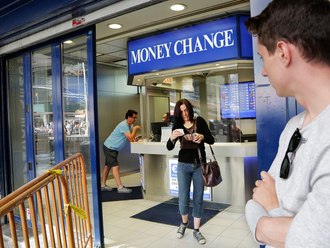Manila : As President Gloria Arroyo's nearly nine-year presidency is about to draw to a close this year, the palace harped on the accomplishments of her administration.
"When she assumed office nine years ago, President Arroyo set out to create the physical infrastructure to spur and sustain economic development," a statement issued by the palace said.
Under Arroyo's 2006-2010 Medium-Term Public Development Programme, 94.19 billion pesos (Dh7.5 billion) has been spent for the construction or improvement of major road arteries.
Heading these completed major roadways is the Subic-Clark-Tarlac Expressway (SCTEX), a 94-kilometre major highway connecting Metro Manila with north and northwest provinces.
A major part of the Luzon Urban Beltway, the SCTEX not only cut travel time but also resulted in the more efficient movement of commerce to and from Metro Manila.
The newly completed Southern Tagalog Arterial Road Tollway is another major accomplishment for the Arroyo government. The road cuts travel time from Santo Tomas, Batangas, to Batangas City by 90 to 120 minutes.
Halving the travel time
In Visayas, central Philippines, the 2.2 billion peso Bohol Circumferential Road cut travel time from one end of the island to the other by half, from eight to four hours. The project was completed in 2006.
In the northern part of the country, the government is expected to complete soon the Halsema highway and Bontok-Tabuk-Tugugarao Road. The completion of these two roadways is aimed at benefiting the North Luzon Agricultural Quadrangle.
Other construction activities are being carried out in other parts of central and southern Philippines.
Under various stages of rehabilitation are the Nido-Bataraza-Rio Tuba Road, Panay Island Road Package, Maharlika Highway, Dinagat Island Road Network, Surigao-Davao-coastal Road, Zamboanga Coastal Road, and the Awang-Upi-Lebak Maguindanao Road.
Sea and Air
Among the projects are 22 facilities and seaports. These projects, with an aggregate of 5.61 billion pesos (Dh448 million), are designed to ease the movement of people and goods to and from Luzon and Mindanao.
In an archipelagic country like the Philippines, seaports are a must.
The government has refurbished the Subic Bay Port at a cost of 8.04 billion pesos as well as the Batangas Port, Jagna Port, Ubay Port, And Tubigon Port in Bohol and Lucena Port.
The construction of new airports and improvement of old ones have been undertaken at a cost of 40 billion pesos.
The Diosdado Macapagal International Airport in Pampanga and the Poro Point International Airport in La Union in northern Philippines fall under this category as well as the Bacolod-Silay Airport and the Iloilo Airport in the central portion of the country.












